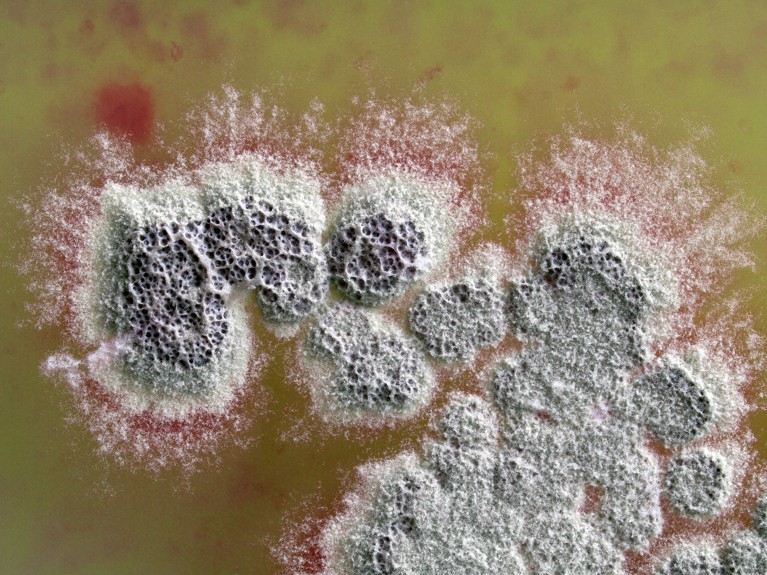Powerful new antibiotic that can kill superbugs discovered in soil bacteria
Article Date: 31 October 2025
Source URL: https://www.nature.com/articles/d41586-025-03595-3

Summary
Researchers studying how the soil bacterium Streptomyces coelicolor makes the antibiotic methylenomycin A unexpectedly found a much more powerful intermediate compound, premethylenomycin C lactone. Tests published in the Journal of the American Chemical Society (2025) show this intermediate is around 100 times more potent than the final product and can kill several Gram-positive bacteria, including drug-resistant Staphylococcus aureus and Enterococcus faecium, at very low concentrations.
Key Points
- Scientists revisited the biosynthetic pathway of methylenomycin A in Streptomyces coelicolor and isolated intermediate molecules.
- Premethylenomycin C lactone, an intermediate, showed ~100× greater antimicrobial activity than the final antibiotic product.
- The compound killed multiple Gram-positive strains, including drug-resistant S. aureus and E. faecium; minimum inhibitory concentration (MIC) as low as ~1 µg/ml for some strains versus 256 µg/ml for methylenomycin A.
- This intermediate outperformed methylenomycin A and in some tests was more active than vancomycin against certain resistant strains.
- The discovery was accidental: intermediates identified during fundamental genetic and biochemical studies were later tested by a PhD student and found to be highly bioactive.
Context and relevance
Antimicrobial resistance is a mounting global health crisis; projections suggest millions of deaths if new treatments are not found. This work highlights that revisiting ‘old’ biosynthetic pathways and looking at intermediates — not only end products — can reveal new bioactive scaffolds for antibiotic development. It underscores a practical strategy for drug discovery: study natural production routes in microbes to uncover unexpectedly potent molecules.
Author’s take (punchy)
This is the kind of tidy, high-impact find that reminds you basic research pays off. The team didn’t set out to find a superior drug — they were mapping a pathway — and came up with a compound that could shift how we hunt new antibiotics. If further testing (toxicity, mechanism, animal studies) pans out, this could be a major lead against resistant Gram-positive infections.
Why should I read this?
Because it’s a proper science happy accident: someone dug into how bacteria make an antibiotic and instead found something way stronger. If you care about the antibiotic-resistance crisis, drug discovery, or clever ways to mine nature for new medicines, this saves you time — we read the paper so you don’t have to. Plus, it shows a shortcut for finding fresh drug leads by re-checking established pathways.
Next steps and caveats
Promising lab potency is an early step. The compound still needs detailed studies on safety, how it kills bacteria (mechanism of action), stability and efficacy in animals, and medicinal chemistry optimisation before any clinical potential can be assessed.

